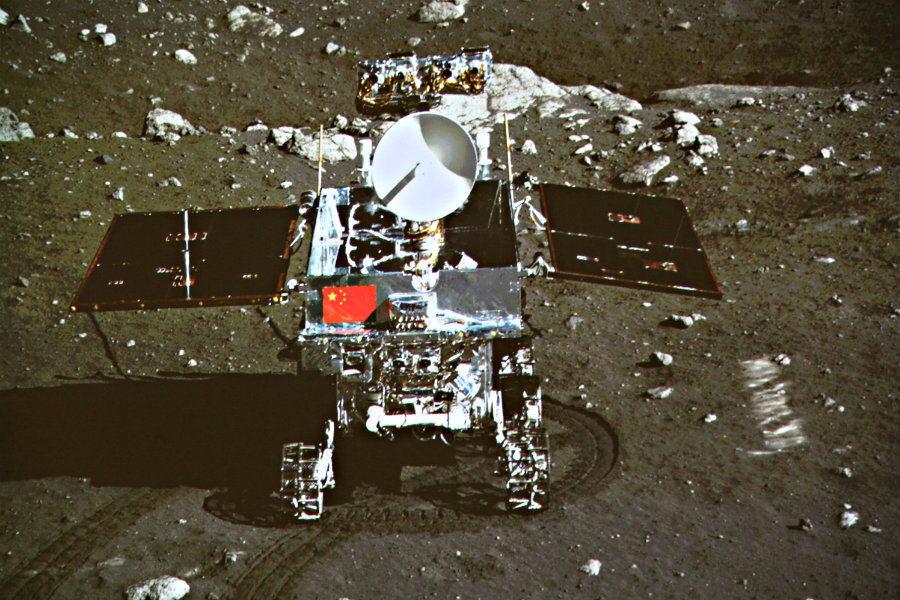Some grieve as China says goodbye to its Jade Rabbit moon mission
Loading...
China’s Jade Rabbit lunar rover lived a good long life, gathering data for almost three years – much longer than its three-month nominal mission. On July 28, the spacecraft went dark for the last time.
The first rover on the moon since 1973, Jade Rabbit arrived on the moon in December 2013 with plans to gather data for three months. Since then, the rover has contributed to China’s space program both through the lessons it taught Chinese scientists about creating similar spacecraft, and through the scientific findings it relayed home.
"There are still many questions I would like answers too, but I'm the rabbit that has seen the most stars!" the lunar rover wrote in a message on its official social media account, the Agence France-Presse reports. "The moon says it has prepared a long, long dream for me."
Jade Rabbit, or Yutu, was named after a Chinese myth about a pet white rabbit who belongs to the goddess of the moon. The name was chosen in an online poll.
The lunar lander was carried to the moon on the Chang’e 3 spacecraft. Two prior missions had orbited the moon, but Jade Rabbit was the Chinese space agency’s first attempt at a soft landing on the moon.
Among other intriguing discoveries, Jade Rabbit found evidence that the moon has been surprisingly geologically active over the last 3.3 billion years.
Yutu scientists mapped out nine distinct rock layers on the moon. The lunar rover also explored a massive crater called C1 near its landing site, finding signs that it resulted from a huge impact between 80 million and 27 million years ago.
Researchers also concluded that Jade Rabbit's landing site has a very different composition from areas explored by previous missions.
Jade Rabbit was immobile for a large portion of its time on the moon, after a glitch stopped its movement in January 2014, and some researchers believed that the mission had ended as long ago as March 2015.
"Unfortunately, Yutu encountered mechanical problems and has ended its mission," Chinese space researcher Long Xiao told Space.com in 2015. "No more data will come. However, our report only provides the scientific results based on imagery and radar data. More results from NIS and APXS for composition study will come out soon."
The lunar rover ended its mission for good on July 28, prompting an outpouring of social media responses on the craft’s Weibo page. Many of the mission’s followers expressed grief at Yutu’s demise, while the farewell post itself received 100,000 likes, shares, and comments.
The space agency hopes to land another rover on the far side of the moon within a few years, and a crewed mission could be not far behind.
China launched its first human space traveler into orbit in October 2003. Since then, the space agency has conducted four other crewed missions, and hopes to fly to Mars by 2020.








